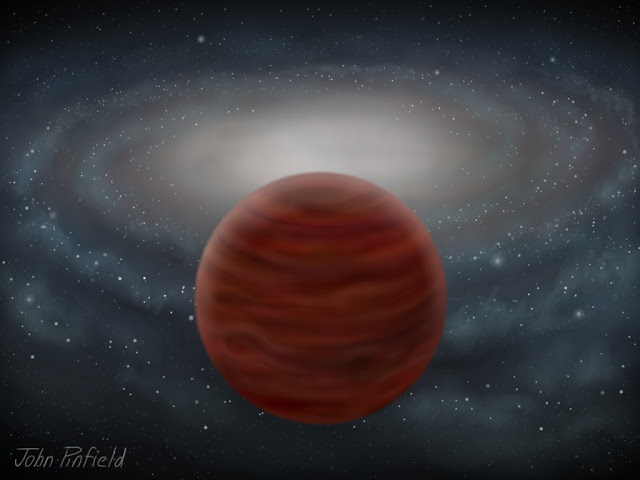

| Online: | |
| Visits: | |
| Stories: |

| Story Views | |
| Now: | |
| Last Hour: | |
| Last 24 Hours: | |
| Total: | |
Record Breaking Discovery: Astronomers Identify Purest, Most Massive Brown Dwarf
An international team of astronomers has identified a record breaking brown dwarf (a star too small for nuclear fusion) with the ‘purest’ composition and the highest mass yet known. The object, known as SDSS J0104+1535, is a member of the so-called halo – the outermost reaches – of our Galaxy, made up of the most ancient stars.
The scientists report the discovery in Monthly Notices of the Royal Astronomical Society.
An artist’s impression of the new pure and massive brown dwarf.
It was previously not known if brown dwarfs could form from such primordial gas, and the discovery points the way to a larger undiscovered population of extremely pure brown dwarfs from our Galaxy’s ancient past.
The research team was led by Dr ZengHua Zhang of the Institute of Astrophysics in the Canary Islands. He said: “We really didn’t expect to see brown dwarfs that are this pure. Having found one though often suggests a much larger hitherto undiscovered population – I’d be very surprised if there aren’t many more similar objects out there waiting to be found.”
SDSS J0104+1535 has been classified as an L type ultra-subdwarf using its optical and near-infrared spectrum, measured using the European Southern Observatory’s Very Large Telescope (VLT). This classification was based on a scheme very recently established by Dr Zhang.
Contacts andn sources:
Dr Robert Massey,Royal Astronomical Society
Dr ZengHua Zhang, Instituto de Astrofísica de Canarias,
Prof David Pinfield, Centre for Astrophysics Research, University of Hertfordshire,
Citation: “Primeval very low-mass stars and brown dwarfs – II. The most metal-poor substellar object“, Z. H. Zhang, D. Homeier, D. J. Pinfield, N. Lodieu, H. R. A. Jones, F. Allard, and Ya. V. Pavlenko, Monthly Notices of the Royal Astronomical Society, published by Oxford University Press, in press.
Source:



